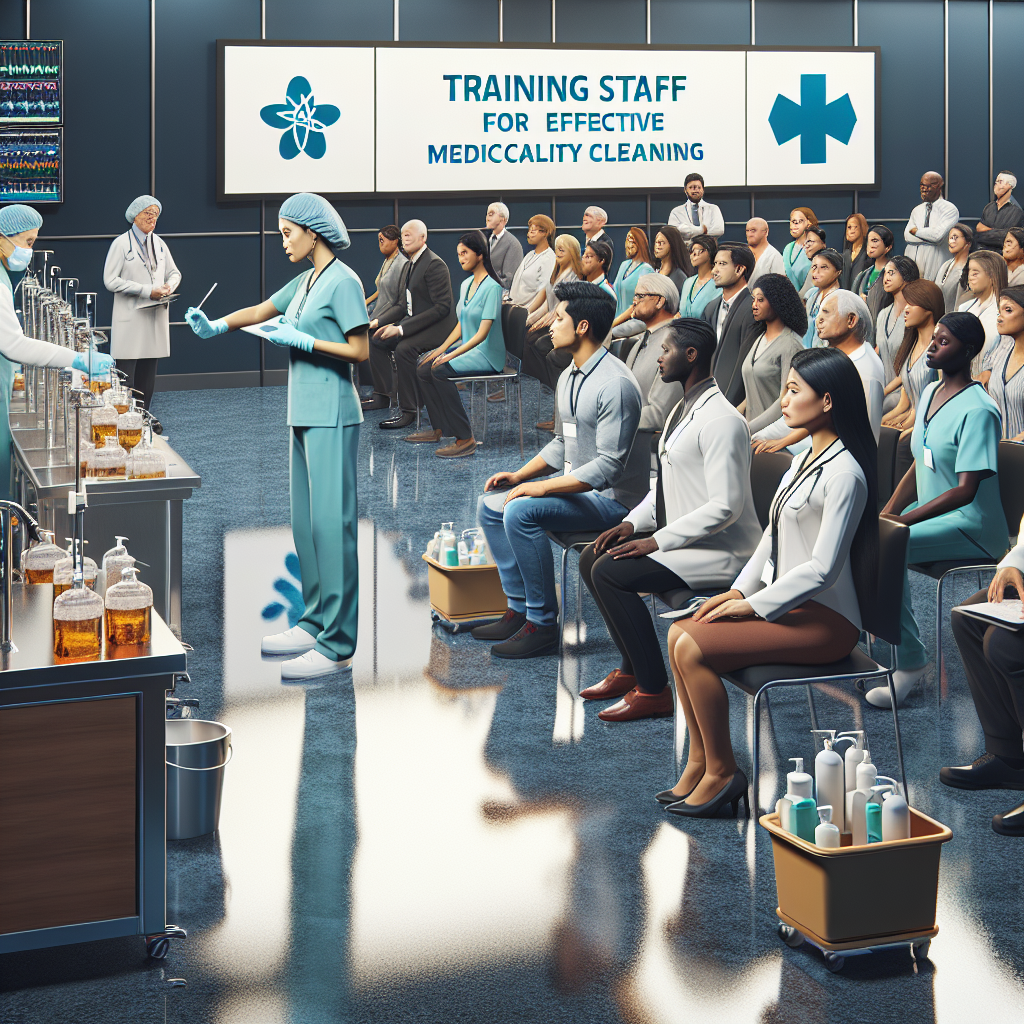Cleanliness in medical facilities isn’t just about aesthetics—it’s about safety, health, and well-being. In a world that has been significantly impacted by infectious diseases, the importance of effective cleaning protocols in medical settings has come to the forefront. This article delves into how training staff for effective medical facility cleaning not only preserves a sterile environment but also enhances patient trust and employee satisfaction.
The Importance of Effective Cleaning in Medical Facilities
Protecting Patients and Staff
In hospitals and clinics, the stakes are high. Contaminated surfaces can harbor pathogens that lead to healthcare-associated infections (HAIs). A well-trained cleaning staff plays a crucial role in minimizing these risks, ensuring that both patients and healthcare personnel are safeguarded.
Complying with Regulations
Healthcare facilities are subject to stringent regulations regarding cleanliness. Compliance with guidelines set forth by organizations like the Centers for Disease Control and Prevention (CDC) and the Occupational Safety and Health Administration (OSHA) is vital. Proper training prepares staff to meet these standards and protect the institution from penalties and lawsuits.
Key Components of Effective Cleaning Training
Understanding the Cleaning Process
Effective cleaning goes beyond just scrubbing surfaces. Staff should be trained on the entire cleaning process, including:
- Preparation: Removing clutter and ensuring all necessary supplies are within reach.
- Cleaning: Using appropriate techniques to clean surfaces effectively. This might include using specialized cleaning solutions for different types of surfaces.
- Disinfection: Knowing how to properly use disinfectants, with attention to dwell time to kill pathogens.
- Inspection: Regularly checking the effectiveness of cleaning and making adjustments as needed.
Training on Infection Control Protocols
Training should encompass a strong foundation in infection control measures. Staff need to be aware of:
- Transmission pathways: Understanding how infections spread can empower them to take effective preventive measures.
- Personal Protective Equipment (PPE): Proper use of gloves, masks, and gowns to ensure personal safety and patient protection.
Best Practices for Staff Training Programs
Interactive Learning Environment
Training sessions should not be purely theoretical. Incorporating hands-on training, group discussions, and role-playing scenarios can enhance understanding and retention.
Regular Refresher Courses
In the rapidly evolving field of healthcare, continuous education is key. Ongoing training and regular refresher courses keep staff updated on the latest protocols and techniques.
Verifying Competence
After training sessions, test staff on their knowledge and practical skills. This verification not only ensures compliance but also boosts confidence among employees in their cleaning capabilities.
Effective Communication within Teams
Building a Culture of Cleanliness
Effective cleaning practices stem from a collective mindset. Encourage open lines of communication among staff to share experiences, challenges, and solutions related to cleaning. Regular team meetings can foster camaraderie and reinforce the importance of cleanliness.
Feedback Mechanism
Establish a system where cleaning staff can provide feedback on procedures or suggest improvements. Valuable insights often come from those on the front lines, and their input can enhance the overall cleaning program.
Utilizing Technology in Training
Online Training Platforms
In the digital age, leveraging technology can enhance training efficiency. Online modules can provide easy access to cleaning protocols and updates, allowing staff to learn at their own pace.
Performance Tracking Tools
Implementing software solutions to track employee training progress, competency levels, and compliance can help facilities identify areas needing improvement and recognize outstanding staff performance.
Conclusion: Prioritizing Effective Cleaning for Healthier Environments
Training staff for effective medical facility cleaning is a vital component of maintaining a safe healthcare environment. It protects patients, staff, and ultimately the reputation of the institution. By investing in comprehensive training programs that include practical applications, ongoing education, and fostering a culture of communication, healthcare facilities can ensure they not only meet compliance regulations but also provide the highest standard of care. In doing so, they contribute positively to health outcomes and the overall experience of all who enter their doors.
By prioritizing training and continuous improvement in cleaning protocols, we can create healthier, safer, and more trustworthy medical environments for everyone.


